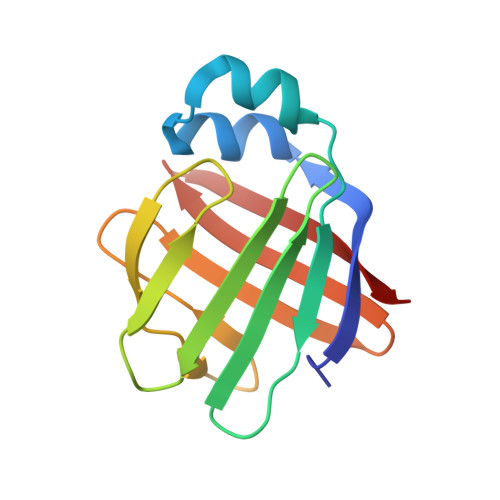Structural and dynamic determinants of ligand binding in the ternary complex of chicken liver bile acid binding protein with two bile salts revealed by NMR
Eliseo, T., Ragona, L., Catalano, M., Assfalg, M., Paci, M., Zetta, L., Molinari, H., Cicero, D.O.(2007) Biochemistry 46: 12557-12567
- PubMed: 17929837
- DOI: https://doi.org/10.1021/bi7013085
- Primary Citation of Related Structures:
2JN3 - PubMed Abstract:
Bile acids are physiological detergents facilitating absorption, transport, and distribution of lipid-soluble vitamins and dietary fats;they also play a role as signaling molecules that activate nuclear receptors and regulate cholesterol metabolism. Bile acid circulation is mediated by bile acid binding proteins (BABPs), and a detailed structural study of the complex of BABPs with bile salts has become a key issue for the complete understanding of the role of these proteins and their involvement in cholesterol homeostasis. The solution structure here reported describes, at variance with previously determined singly ligated structures, a BABP in a ternary complex with two bile acid molecules, obtained by employing a variety of NMR experiments. Exchange processes between the two bound chenodeoxycholate molecules as well as the more superficial ligand and the free pool have been detected through ROESY and diffusion experiments. Significant backbone flexibility has been observed in regions located at the protein open end, facilitating bile salts exchange. A detailed description of the protonation states and tautomeric forms of histidines strongly supports the view that histidine protonation modulates backbone flexibility and regulates ligand binding. This structure opens the way to targeted site-directed mutagenesis and interaction studies to investigate both binding and nuclear localization mechanisms.
Organizational Affiliation:
NMR Laboratory, Department of Chemical Science and Technology, University of Rome Tor Vergata, 00133 Roma, Italy.















